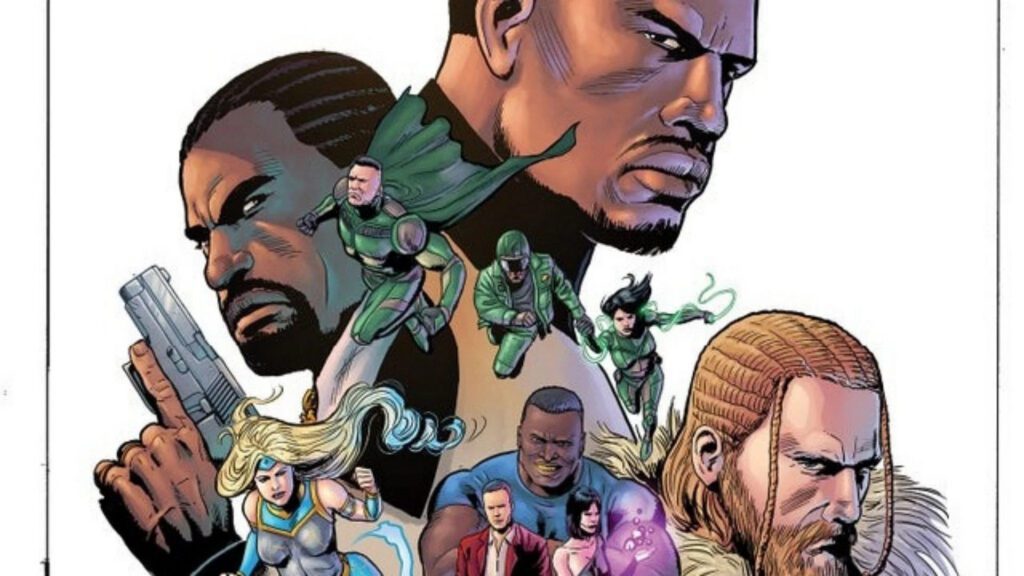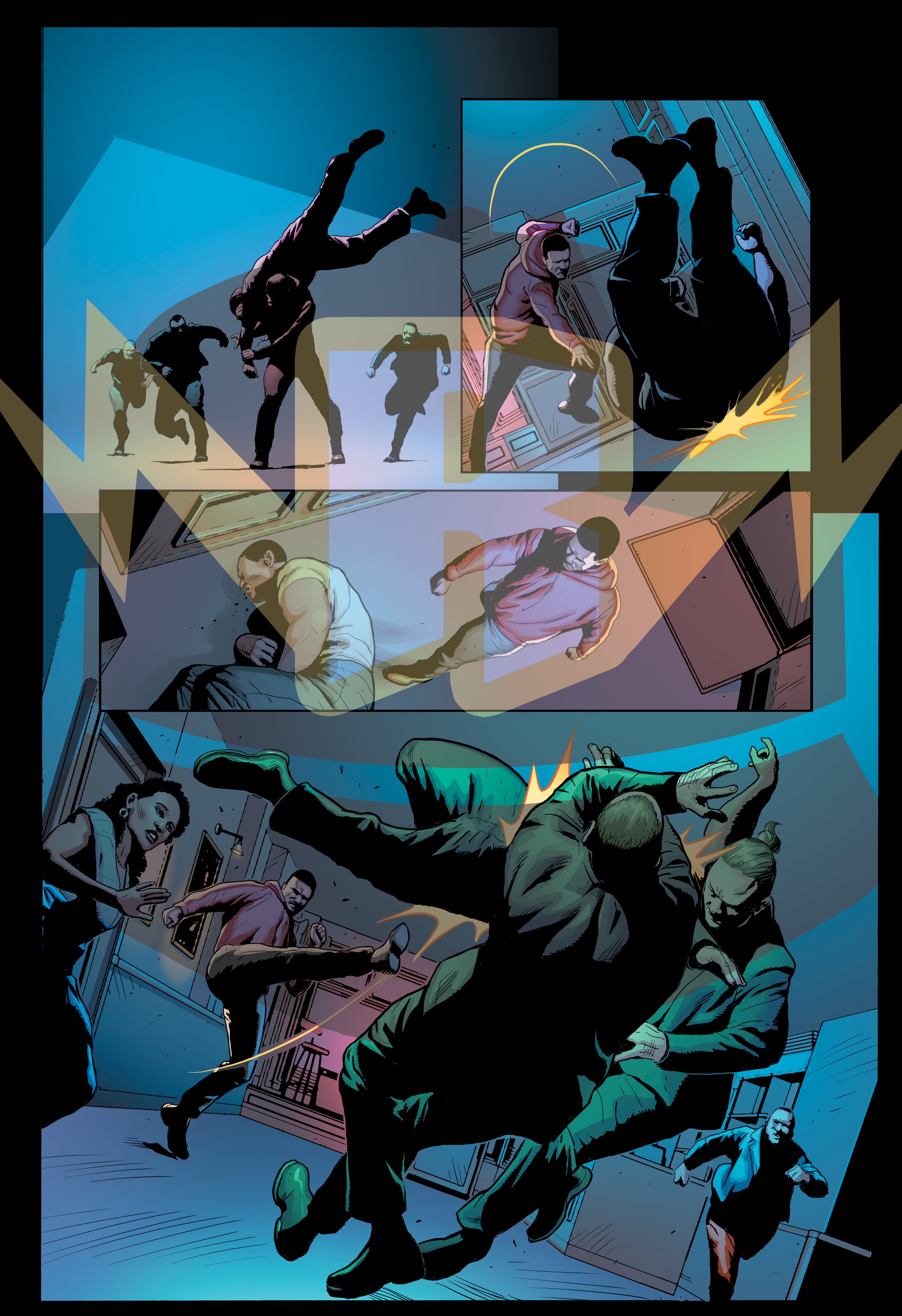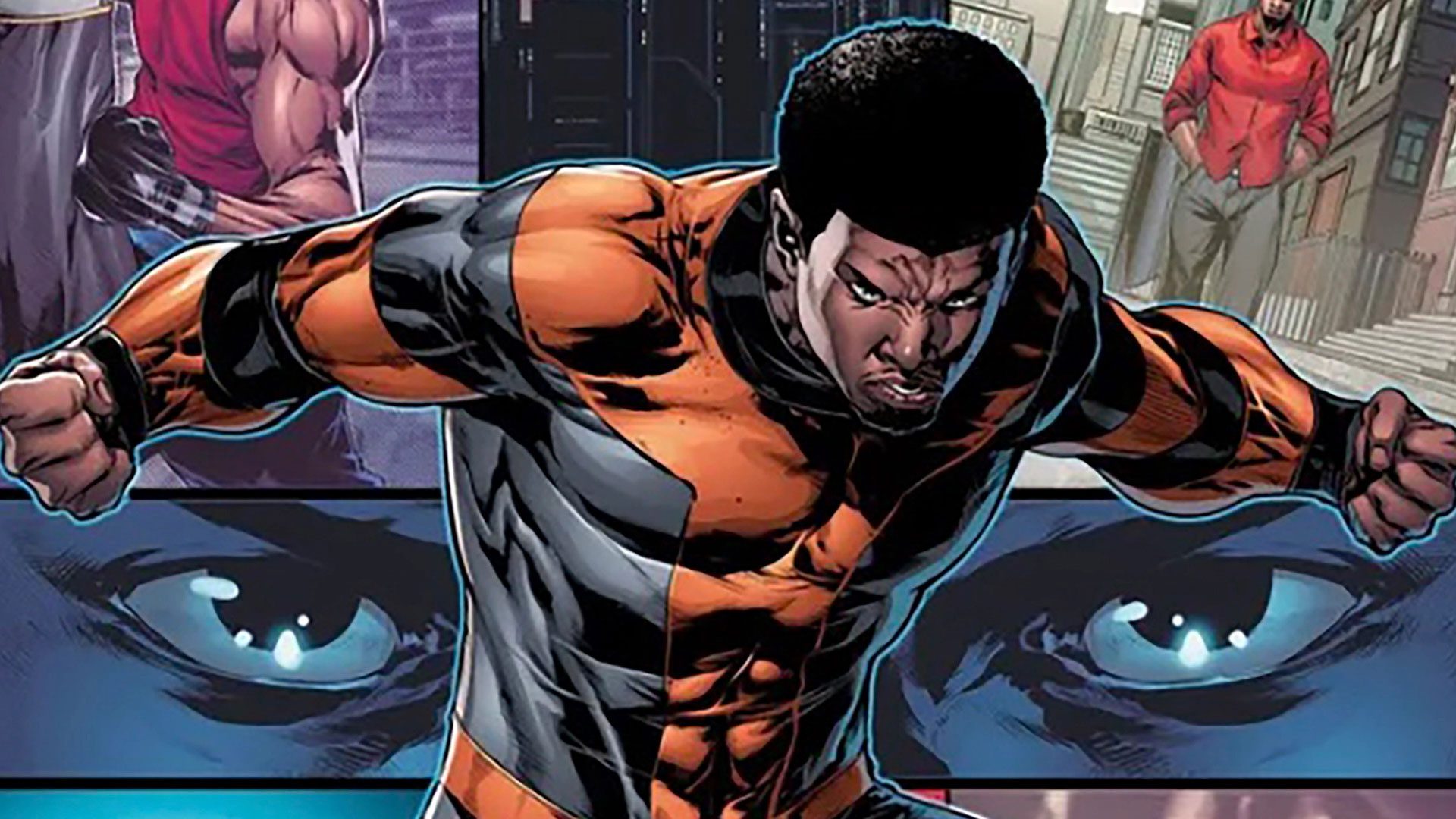REVIEW: Isom #1
Ill-Advised Part 1
Whether you’re a Marvel or DC fan, fell out of enjoying comic books in recent years, or are a complete newbie to the genre, Isom’s debut book is a delight through and through. The perspective of this review is from the latter, someone who’s read maybe one or two comics in his entire life, so if you want an experienced comic buff’s opinion, you won’t quite get that here. Contrary to myself, the Rippaverse is created by experienced lovers of the medium, and that is felt through every page turn. Those following Eric July’s journey forming the Rippaverse already know about the values and commitments he’s set forth, differentiating it from the mainstream comic book industry and what hardcore comics fans he and his team are, but does the debut book deliver what it set out to do?
First off, Isom is great for a newcomer to the medium. One of the reasons I never really got into comics was how overwhelming it was to start somewhere. I wanted to start from the beginning of a story, the origin of a setting, and the birth of the Rippaverse is as close as a newbie like me is going to get to that. On the other end of the spectrum, you have longtime comic fans who want a return to form for comic books. The modern comic industry has been rife with political correctness and agenda-pushing, and Disney’s mainstream influence is certainly not helping. Whether or not you agree with the agendas behind the comics industry, it’s just natural not to want to be preached to, and this is a void the Rippaverse fills. Rippaverse Comics ticks many boxes for people like me or just folks disappointed in modern comic books: it’s the start of a new setting, independently funded and operated, and made by fans for fans. There was a lot of talk and buildup to this debut comic, but it walks the walk because Isom #1 is a legitimately fun and engaging read.
Characters

I felt a connection to the protagonist right from the get-go. Avery Silman is an outsider and a true independent. He lives and works on a self-made ranch outside the large city of Florespark, and while he hasn’t quite cut all ties to his acquaintances, he’s pretty much settled on his close-knit group of ranch hands and family. I see a lot of myself in the way he wants to get away from the status quo and the mainstream idea of success and lifestyle. Avery’s not portrayed as the typical image of an outsider, though; he’s incredibly talented and successful in his own way – operating a successful ranch is nothing to sneeze at. Then, there’s his athletic ability and general fitness, which are top-shelf. But what I appreciate so much about this character is how vulnerable and flawed he is across all these areas. Sure, he’s got what it takes to be a superhero, and he’s got the moral high ground as someone “outside” the corrupt system, but he’s not portrayed as perfect in either of these regards. Avery gets pushed around by thugs and beings bigger and more capable than him. Part of the revenge plot of this first issue has to do with Avery getting his ass handed to him by those tougher than him. His moral judgment gets pushed around a bit as well, as we see him acting not purely based on vigilantism and the safety of others, but out of personal pride and honor. You could say that Avery is behaving selfishly through this first issue, and you wouldn’t be entirely wrong; so much for having a moral high ground. It’s the way in which these flaws dance throughout this first issue that makes Avery more human and relatable than most portrayals of superheroes I’ve seen. He’s got a caring heart and capable physical strength, but he’s also a bit in over his head and with a hurt ego. I’m rooting for Avery way more than I initially thought I would, not because he’s morally correct and must stop the bad guys, but because he’s like me or you and not some distant, stoic, godlike superhuman.
A lot of Avery’s humanity can be seen in the other characters as well. Avery’s sister Altona helps him out in a pinch and is very successful and resourceful in her own right, yet it’s clear she’s got her own set of problems and moral questions to answer. Working for “the system” in the heart of a city of criminals is not exactly something that goes without a guilty conscious. The antagonist, Darren, isn’t all that likable, yet he comes off as very intelligent and reasonable, at least in the initial meeting. He makes some logical remarks regarding his childhood pal, Avery, that plenty of readers might agree with. So, while the antagonists aren’t likely to be as relatable or likable as the heroes of this story, their personalities are fleshed out to make them at least multi-dimensional and dynamically interesting – well, except the henchmen, who are about as dumb as a bag of rocks, but that’s part of the fun and balance, isn’t it? Then, there’s Avery’s niece, who walks into a serious conversation between her mom and uncle Avery. It’s no easy task to write children with the intellect and respect they deserve, and Isom does it effortlessly. Media often portrays kids as dumb but cute props in a story, or perhaps as plot devices to get the heroes into the action, but little Vassie has all the inquisitiveness and precociousness that actual smart children tend to have. The initial host of characters in Isom are entertaining, believable, and written well for a debut, though dialogue conversations could perhaps use a little improvement in future entries.
 Dialogue
Dialogue
One aspect of dialogue that’s particularly strong is the portrayal of each character’s distinct personality. You really get a sense of who these people are based on how they talk and converse. Whether it’s the veteran ranch manager speaking to new hires, the arrogant owner of Club Merq giving his lackeys orders, or world-weary Avery talking to his sister, there’s an organic way of speaking with slang and informality that makes these characters feel real. But while each character’s dialogue informs their personality organically, the naturalness of conversations could be improved. In general, they read and flow well, but there are several instances of forced exposition where a character seems to be speaking to the reader to inform them of the context, not the character in front of them. The reunion between Avery and his old acquaintance Darren fills us in on what Avery was like back in his school days, but the dialogue comes across as unnatural when telling Avery about Avery’s own past. This “as you know” dialogue is as old and frequent in writing as time itself, so this is not a major ding to the comic, but it is a gripe of mine every time I come across it, and Isom is no exception. There’s only one other instance of “as you know” dialogue between two characters in this book, and it’s not by any means an egregious example of forced exposition; in fact, most readers will hardly notice it, considering the wonderfully brisk pace Isom has. Of course, placing context and exposition in the dialogue between characters is generally preferred over walls of text laden in front-loaded exposition dumps. Comic books aren’t very wordy by their very nature, and Isom handles its words well enough.
Pacing/Structure

However, conversations convey just the right amount of characterization and information needed with little to no small talk padding the pages. And you don’t want to pad out these pages with unnecessary dialogue because the artwork is so dang attractive. The different shades of color in the backdrops are skillfully created, and the world of Florespark feels like it’s brimming with activity. Every background character looks distinct enough, and the buildings and walkways of the cityscape are interesting to look at. This might make some readers laugh, but what really stood out to me was the sheer variety of vehicles populating the environment. Florespark is set in an alternate Earth, so it makes sense to see familiar cars like Chevys, Fords, and Mini Coopers dotting the city without their badges. The detail of the variety of vehicles is very, very cool. As an automotive geek, I had a field day identifying the exact models and makes of actual cars and noticing how the proportions are nearly perfect to their real-life counterparts. That one small aspect gives me confidence that Isom will be a series with a nice level of detail to its art and world. All this being said, there’s nothing particularly mindblowing about the artwork; it serves its purpose well and establishes a good tone. Isom’s visual flair isn’t quite the best of the best, but it is impressive nonetheless.
Even if you don’t care about cars or detailed art in general, you’ll still enjoy Isom’s visual activity because of its easy-to-follow layout. I’m not experienced in reading comics, but I effortlessly navigated the pages. You naturally read from left to right, top to bottom, and speech bubbles catch the eye in the exact order they are meant to be read. I’ve had problems following where to put my eyes next in manga and comics in the past, and Isom is easy to read and very attractive on that front – maybe too simple and clean for some. Speaking of pacing, the story itself moves along comfortably as well. Dialogue always pushes the plot forward, and there’s very little filler or empty pages. To my delight, I found Isom to be a true page-turner; I didn’t want to stop at almost any point in the story. One aspect that helps keep it going is the cadence at the end of every page. There’s usually the equivalent of a comma right before a page turn, a sort of mini-cliffhanger that assures the reader will keep going and not put the book down just yet. It’s brilliantly paced from beginning to end. Even without the flow of cadences, it’s a generally fun read. The worst thing about the pacing is that it ends before you know it. I don’t know whether it’s because it was so good that I wanted more or because this first volume is short by comic book standards, but it ended before I really wanted it to, which, again, might be a good thing. While the end of Isom #1 is the expected “to be continued” cliffhanger, there are teasers at the end of the book that give the reader a little bit more intrigue and insight into the wider Rippaverse setting to whet the appetite.
Story and Setting
But it isn’t just the teaser at the end that gives the reader a peek into the broader scope of the setting; Isom is filled with worldbuilding. We are shown the dynamics of a police force and a criminal underbelly, yet all isn’t as it seems. What we find out gives us more reasons to side with Avery’s decision to live a life away from it all on a ranch. It’s clear that operating in the city at almost any level is placing a toe in the waters of corruption and eventually getting drowned in it. We witness this with Avery’s sister, who works for a large corporation in the city. At one point, she says that she is untouchable because of “who she works for.” This spiderweb of influence and connections through the city can help Avery get vital information and resources, but it also might backfire when he crosses the wrong people. But, much to his dismay, Avery will have to enter the web of corruption that is Florespark to find the missing daughter of his friend. This search is how the story begins, but we quickly see that Avery is in over his head and will inevitably be pulled into a deeper plot. I love the initial small scale of it all. It’s not a story of galactic proportions over the fate of humanity (yet); it starts local, helping out a friend. Avery’s reluctance makes it all the more charming and dynamic.
It’s clear there’s much more to the wider setting than Florespark city or Avery’s ranch just outside it. Beings with superhuman abilities are termed “excepts” in the Rippaverse, and some appear in Isom #1 with origins way outside Florespark. The source of these excepts’ powers, their agendas, and where they came from is mostly kept a mystery in this first volume. The teaser to another Rippaverse story at the end of Isom #1 makes it clear that there’s much more going on beyond the scale of Florespark city, even hinting at galactic conflicts. The setting already establishes plenty of mysterious intrigue, and it’s only the first volume. I’m excited to see where the wider story goes and what other heroes we get to follow in the Rippaverse beyond Isom.
My Favorite Aspect of Isom
Of all its qualities, I was perhaps the most delightfully surprised by the thematic richness of Isom. I expected the usual barebones themes of heroism in the face of adversity and general vigilantism among a nest of vipers, but I got so much more. Avery is a protagonist with an honorable yet conflicted moral sense. We latch onto him because he isn’t entangled in the corruption of Florespark with its many conflicts of interest and horrible crime. Avery doesn’t like being told what to do, but he also has a sense of moral dignity that he clearly doesn’t want tainted by any means. Holding onto one’s dignity, one’s individual humanity, is so rare in today’s world that I can’t help but cheer Avery on, even if his quest begins with a hurt ego. He won’t let money, influence, or power persuade him; he acts on his own principles, not the city’s. The themes of going along with the status quo, fitting in, meeting expectations, duty to family, etc., are all presented thoughtfully, yet without any coercion or force. This is no mindless superhero comic; there’s a lot to consider and reflect on, yet it’s subtle and serves the story. The themes of Isom are presented through the plot and actions of the characters and avoid being hamfisted or pretentiously in-your-face.
Conclusion
Isom isn’t perfect, but it’s exceptionally good. It might not be the best thing you’ve ever read, but it’ll most likely impress, especially considering what the comic book industry has been pushing out these days. Being the very first issue in a new comic universe brings with it the growing pains and necessary exposition inherent to any “first” of a series, and this initial entry avoids most of the usual pitfalls. Still, Isom goes well beyond my expectations. I haven’t read many comic books in my life, but Isom is absolutely the best of the small handful I have read. There’s just not much to complain about here: the artwork is high-quality, the plot is engaging and brisk, the characters are well-realized, and the setting is introduced well. It’s probably not the most exciting and amazing comic enthusiasts will ever come across, but it’s a solid first entry in a new universe with tons of potential and heart. Heavily recommended, whether you like comics or not.
Isom #1
Plot - 8.2
Characters - 8.5
Artwork - 8.2
Progression - 8.5
Action - 8.2
8.3
Great
A legitimately good first entry to a new comic universe. Initial plot is engaging while remaining low tier, and the characters are believable and interesting. The themes and worldbuilding show tons of promise for Isom's progression and future stories in the Rippaverse.








